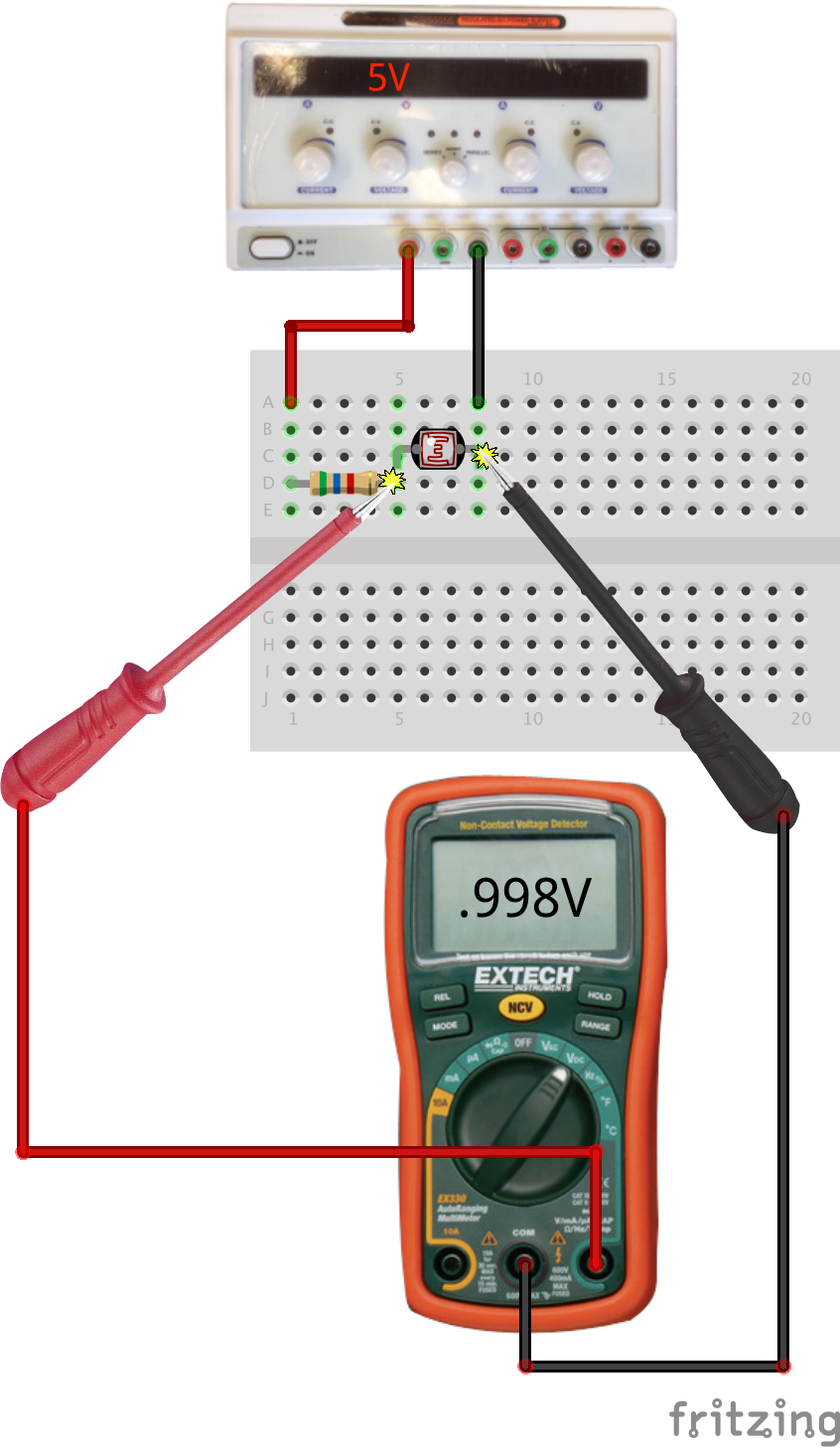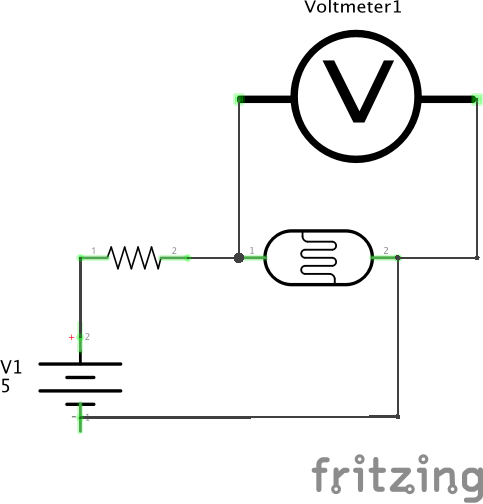Measure changing light level as a varying voltage.
A CdS photocell (i.e. Cadmium-Sulfide photoresistor) is a light sensor in which the resistance changes in response to illumination. They are relatively slow, with a time constant of hundreds of milliseconds, but useful for measuring ambient light and shadow. The resistance decreases in bright light.
A voltage divider circuit can be used for forming a voltage which depends on the light level. The value of the fixed resistor depends upon the desired sensitivity range; a good starting point is 10K ohms.
Rapid light changes and optically encoded data are better measured with phototransistors and photodiodes. But even slow and cheap light sensors can be adapted to measure many other properties indirectly, e.g. chemicals, dust, mechanical position, acceleration, proximity, etc.
For a challenge, find one of the laser diodes and measure the photocell response to the laser beam.

